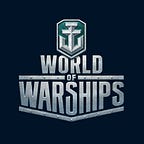HMS Hood and Destruction In the Denmark Strait
How the pride of the Royal Navy was shattered by a single German shell.
A beauty to behold, HMS Hood was the pride of the Royal Navy. The British certainly weren’t shy about flaunting her, and flexed their naval muscles by parading her on world tours and ceremonial trips abroad during peacetime. At the time of her completion in 1920, she was the largest warship in the Royal Navy, a title she retained for 21 years until she met a sudden and catastrophic end at the hands of battleship Bismarck during the battle of the Denmark Strait.
History
Hood was ordered in the heat of World War I, only two months before the 1916 Battle of Jutland unfolded. She was intended to be the lead ship of four Admiral-class battlecruisers, which were meant to be successors to the Queen Elizabeth-class dreadnoughts. This justified the new ships’ eight 381 mm guns and considerable armor thickness, which was on par with their predecessors. Moreover, she incorporated new sloped armor and underwater torpedo protection. However, one decisive thing set Hood apart from the dreadnoughts of her time: her speed. HMS Hood could reach a very respectable top speed of 32 knots, far outclassing the 24 knots that the Queen Elizabeth-class ships could achieve. By the Royal Navy’s standards at the time, it was this particular trait that landed Hood the classification of “battlecruiser.”
Launched from her slipway at John Brown’s Shipyard on the Scottish Clyde river in August 1918, she wasn’t commissioned until after the end of the First World War. Construction of the three other planned ships of her class had been postponed in 1917 due to scarcity of resources, and was finally cancelled in 1919, giving Hood sole claim to being the largest warship on the planet. During the interwar years, Hood participated in ceremonial trips to different parts of the world, famously completing her circumnavigation of the globe in 1924. Her imposing presence was also used to protect trade routes, as part of what were known as the Neutrality Patrols, off the Spanish coast during the Civil War.
The start of World War II saw Hood leading the Home Fleet’s battlecruiser squadron based at Scapa Flow, Scotland. In June 1940, with fall of France imminent, Hood was assigned the position of flagship of Mediterranean Force H. As such, Hood was one of the ships charged with the task of attacking the formerly allied French fleet at Mers-el-Kébir. She hit French battleship Dunkerque with four 381 mm shells in the ensuing action, but was also hit in return. Hood had been sailing side-by-side with Dunkerque only a few months prior during the hunt for the German sisterships Scharnhorst and Gneisenau.
Hood returned to Scapa Flow the following month and remained at the ready to intercept German surface raiders making their way to the North Atlantic to disrupt essential merchant convoys. One such occasion presented itself in May, 1941, when Bismarck and Prinz Eugen were spotted on course to the Denmark Strait. Hood set out with battleship Prince of Wales and engaged the Kriegsmarine force. In the now legendary engagement, Hood was hit on the aft deck by a shell from Bismarck’s fifth 380 mm main battery salvo. The projectile exploded inside the ship’s interior, igniting the rear magazine and causing a sudden and unexpected blast. HMS Hood broke in two and sank in a mere matter of minutes. Only three men from her 1,418-man crew survived.
The spectacular end of HMS Hood demonstrated what many in the Royal Navy already knew: though still mighty and powerful, Hood was obsolete in terms of her armor protection, and ill-equipped to deal with long-range high caliber plunging fire. She was better-suited to the close-range engagements of the First World War.
Modeling the ship
In World of Warships, HMS Hood appears as she would have looked at the time of her final battle with Bismarck at the Battle of the Denmark Strait in 1941. Her five ‘Unrotated Projectile’ AA Rocket mounts were among Hood’s most telling and remarkable components. This innovative weapon was able to fire up to 10 small rockets at a time which would detonate, revealing an explosive charge connected to three parachutes by long wires. The idea was for airplanes to become entangled in these wires, triggering the explosive charge in the process.
Main battery: eight 381 mm/42 Mk I guns.
These were some of the most effective naval guns ever developed for the Royal Navy. Case in point, they were first used on the Queen Elizabeth-class ships of World War I, and saw their last use on HMS Vanguard, which was commissioned after the end of World War II.
Secondary battery: seven twin mounts of 102 mm/45 QF Mk XVI guns.
Anti-aircraft armament: four quadruple 12.7 mm Mk III Vickers machine guns; three octuple 40 mm Vickers Mk VIII 2-pounder cannon emplacements; and five UP Mark I rocket launchers, each with a capacity of twenty rockets.
Ship’s 3D Model
Originally published on the official World of Warships website.
